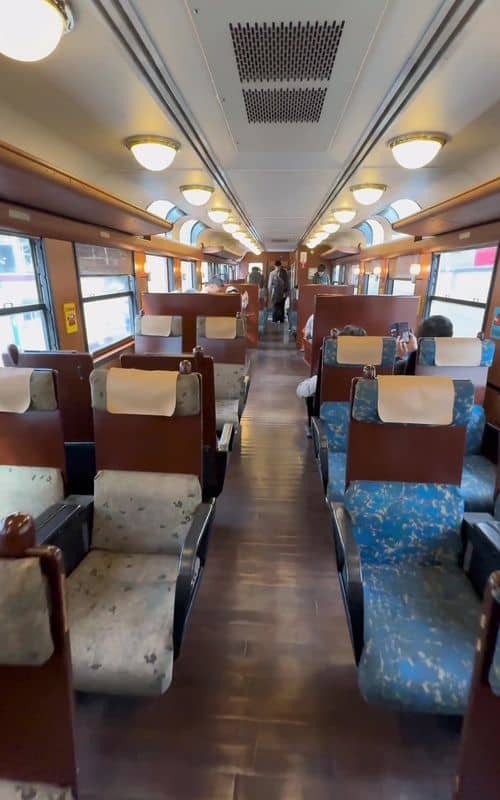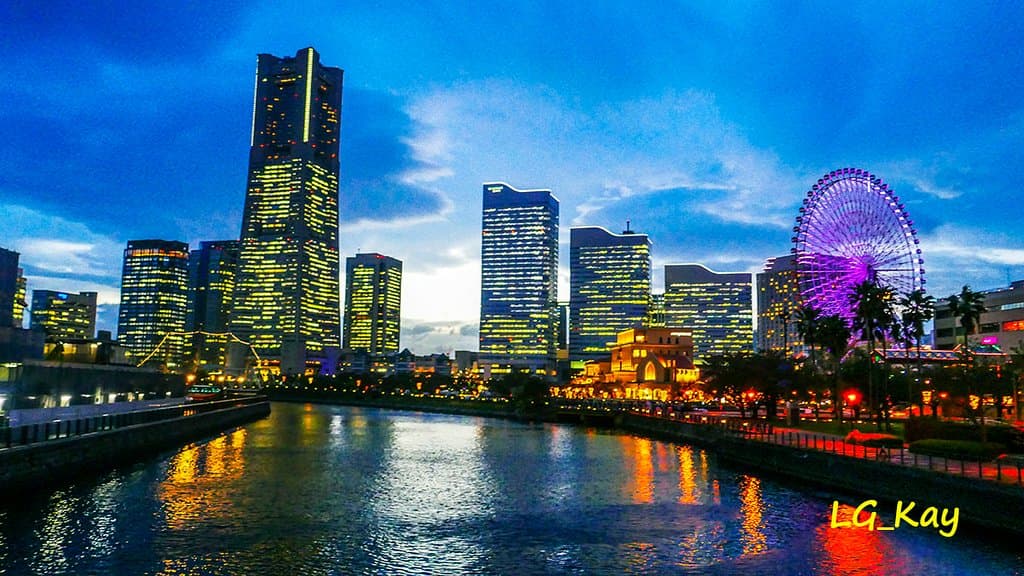Birthplace of Japan's Railways Monument
Commemorates the birthplace of Japan's first railway, featuring a steam locomotive-inspired monument with an engraved timetable.
Highlights
Must-see attractions

Social
From TikTok & Reddit
Best Time
Railway Day events
Birthplace of Japan's Railways Monument
Best Time
Railway Day events
Highlights
Must-see attractions
Commemorates the birthplace of Japan's first railway, featuring a steam locomotive-inspired monument with an engraved timetable.
"It was very moving to see what the station building looked like back then."
🔍 Look for the Details
The monument's rust adds character, but look closely for the engraved timetable and steam locomotive-inspired design elements.
🌸 Springtime Beauty
Visit in spring to see the beautiful Morel cherry blossoms blooming behind the monument, adding a scenic backdrop.
Highlights
Discover the most iconic attractions and experiences
The Monument Itself
Original Yokohama Station Site
A rust-kissed stone monument with a wheel base, commemorating Japan's first railway. The engraved timetable adds a historical touch.
Engraved Timetable
On the Monument
A detailed engraving of the original railway timetable, offering a tangible link to the past and the dawn of Japanese rail travel.
Cherry Blossoms
Behind the Monument
Morel cherry blossoms bloom behind the monument, adding a touch of natural beauty and seasonal charm to the historical site.
Plans like a pro.
Thinks like you
Planning Your Visit
Timing Your Visit
Understanding the Monument
Best Times
Insider Tips
from TikTok, Instagram & Reddit
🔍 Look for the Details
The monument's rust adds character, but look closely for the engraved timetable and steam locomotive-inspired design elements.
🌸 Springtime Beauty
Visit in spring to see the beautiful Morel cherry blossoms blooming behind the monument, adding a scenic backdrop.
📍 Near North Ticket Gate
The monument is near the North Ticket Gate, making it more accessible and visible than it might seem.
📅 Railway Day
October 14th is Railway Day in Japan, often with events. Check local listings for any special commemorations.
Tips
from all over the internet
🔍 Look for the Details
The monument's rust adds character, but look closely for the engraved timetable and steam locomotive-inspired design elements.
🌸 Springtime Beauty
Visit in spring to see the beautiful Morel cherry blossoms blooming behind the monument, adding a scenic backdrop.
📍 Near North Ticket Gate
The monument is near the North Ticket Gate, making it more accessible and visible than it might seem.
📅 Railway Day
October 14th is Railway Day in Japan, often with events. Check local listings for any special commemorations.
What Travellers Say
Reviews Summary
Visitors find the monument to be a clean and accessible historical marker, particularly appreciating its connection to the original Yokohama Station and the engraved timetable. While some note the rust and difficulty deciphering the text, the monument's design, reminiscent of a steam locomotive, is considered impressive and interesting.
"Very accessible to anyone. Very clean and beautiful place"
Christian Jay Ejercito
"When the railway opened, it was the Yokohama station.
After that, Yokohama Station was relocated and seems to have been renamed Sakuragicho Station.
It was very moving to see what the station building looked like back then.
(20250329)"
アラカンおやじのシニア生活レポ
"In order to manufacture Japan's first railway, railway materials were purchased from England in 1870.
On May 7, 1872, Yokohama Station was built in this area, and the first railway opened between Yokohama and Shinbashi.
A monument was completed on October 13, 1967, symbolizing the place where the railway was founded.
It is quite rusty and the letters are difficult to decipher.
Morel cherry blossoms are watching over the back of this monument."
旅次郎
What People Like
What People Dislike
Frequently Asked Questions
🚇 🗺️ Getting There
The monument is located near the North Ticket Gate of Sakuragicho Station. It's easily accessible by train via the JR Keihin-Tohoku Line or Yokohama Municipal Subway Blue Line.
While there isn't dedicated parking directly at the monument, several public parking lots are available near Sakuragicho Station. Consider using public transport to avoid parking hassles.
Sakuragicho Station is a major hub. You can reach it directly from Tokyo Station via the JR Keihin-Tohoku Line (approx. 30-40 minutes) or from other parts of Yokohama using local train lines.
Yes, the monument is a very short walk from the North Ticket Gate of Sakuragicho Station, making it highly accessible for most visitors.
🎫 🎫 Tickets & Entry
No, the monument is an outdoor public landmark and is freely accessible to everyone at any time.
As an outdoor monument, there are no specific opening or closing hours. You can visit it whenever you like.
There is no admission fee. The monument is a public monument commemorating a significant historical event in Japan.
Official guided tours specifically for the monument are uncommon. However, local walking tours of Yokohama might include this historical spot.
📸 📸 Photography
Early morning or late afternoon offers softer light, which can be ideal for capturing the texture of the monument. Springtime also provides beautiful cherry blossoms as a backdrop.
Try capturing the monument with the engraved timetable clearly visible. Including the wheel base and the surrounding cherry blossoms (in season) can add depth to your shots.
While you can visit at night, the monument is not typically illuminated, so nighttime photography might be challenging unless you have specialized equipment.
🎫 🤔 Historical Context
This monument marks the site of the original Yokohama Station, which was the terminus for Japan's very first railway line that opened on October 14, 1872, connecting Yokohama and Shinbashi.
The monument was completed on October 13, 1967, to commemorate the founding of Japan's railway system at this historic location.
The monument's design is reminiscent of a steam locomotive, featuring a wheel as its base and a detail on top that may represent a safety valve. The engraved timetable further emphasizes its railway heritage.
October 14th is celebrated as 'Railway Day' in Japan, commemorating the opening of the first railway line. Various railway-related events are often held around this date.
For Different Travelers
Tailored advice for your travel style
👨👩👧 Families with Kids
Consider combining a visit with a ride on a local train to or from Sakuragicho Station, making the 'train' theme more engaging for younger visitors. The nearby cherry blossoms in spring also offer a pleasant natural element. It's a good, low-key historical marker that doesn't require a large time commitment, perfect for a family outing.
🚄 Railway Enthusiasts
Visiting on Railway Day (October 14th) could offer a chance to experience related local events, though it might also mean larger crowds. The monument's location near Sakuragicho Station, a modern transport hub, provides a stark contrast to the historical significance of the site, highlighting the incredible evolution of Japanese railways.
Deep Dives
In-depth insights and expert knowledge
The Dawn of Japanese Railways
The construction of this first railway was a monumental undertaking, involving the import of materials and expertise from abroad, primarily England. It symbolized Japan's embrace of Western technology and its ambition to build a modern infrastructure. The establishment of this line was not just about moving people and goods; it was about connecting the nation, facilitating trade, and ushering in an era of rapid development. The legacy of this event is still celebrated today, with October 14th designated as Railway Day in Japan.
Visiting the monument offers a tangible connection to this foundational period. While the monument itself may show signs of age, its design, including the engraved timetable and steam locomotive-inspired base, serves as a powerful reminder of the ingenuity and foresight that characterized the birth of Japan's railway network. It's a place where history enthusiasts and railway buffs can appreciate the humble beginnings of a system that is now one of the most advanced in the world.
Understanding the Monument's Design
Above the wheel base, the monument features an engraved timetable. This detail is particularly poignant, offering a glimpse into the operational realities of the very first railway service. It’s a subtle yet powerful way to convey the historical significance of the site, reminding visitors of the schedules and journeys that began here. The monument's surface has developed a noticeable rust patina over time, which, rather than detracting from its appeal, adds a sense of age and authenticity, evoking the era of steam power.
Further enhancing its thematic connection, the overall design is said to be reminiscent of a steam locomotive. Observers have noted a detail at the top that might represent a safety valve, a critical component of steam engines. These design choices collectively create a miniature tribute to the technology that powered Japan's first railway, making the monument a fascinating piece of historical art as well as a landmark.



Social
from TikTok, Instagram & Reddit